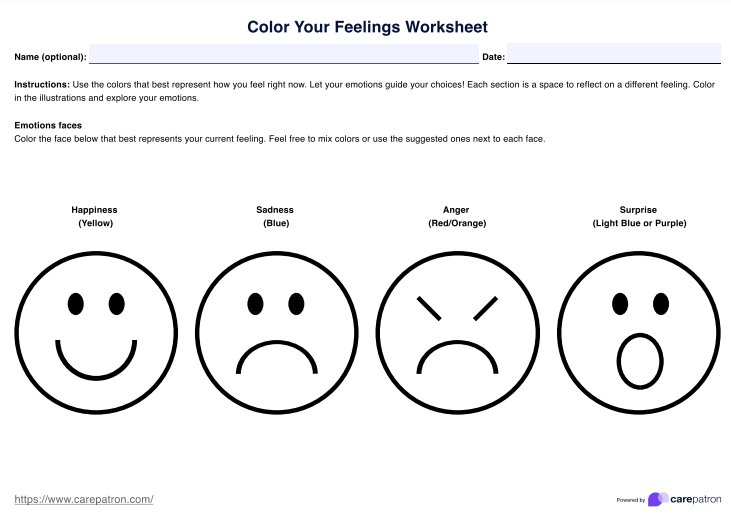Color feelings refer to associating specific colors with particular emotional states or moods. For example, red is often linked to emotions like anger or passion, while blue might symbolize calmness or sadness. Cultural contexts or personal experiences can influence these connections. In art therapy, color feelings help individuals visually represent and process their emotions, offering a nonverbal way to explore their emotional landscape.

Color Your Feelings Worksheet
Discover how the Color Your Feelings Worksheet in art therapy helps individuals express emotions through color, fostering self-awareness and emotional insight.
Color Your Feelings Worksheet Template
Commonly asked questions
Coloring your emotions involves using colors to express your feelings in a creative and intuitive way visually. Start by reflecting on your current emotional state or a recent experience, then assign colors that resonate with those emotions. For example, you might use bold, intense colors like red or black for anger or soft pastels like blue or green for calmness or contentment.
Color-coded feelings involve categorizing emotions by assigning specific colors to represent them. This method is often used in therapeutic and educational tools to simplify the understanding of complex emotional states. For instance, green might represent peace, yellow might indicate happiness, and gray could signify sadness.
EHR and practice management software
Get started for free
*No credit card required
Free
$0/usd
Unlimited clients
Telehealth
1GB of storage
Client portal text
Automated billing and online payments











